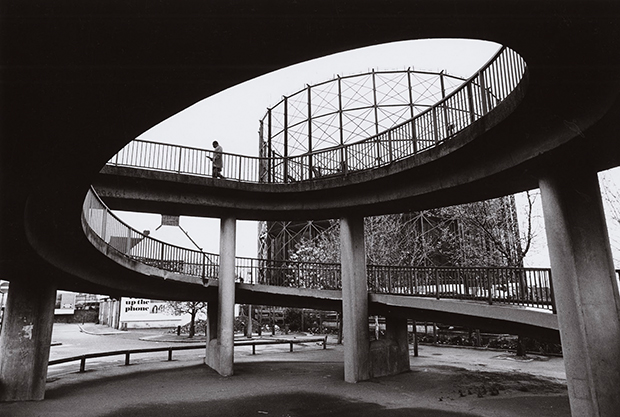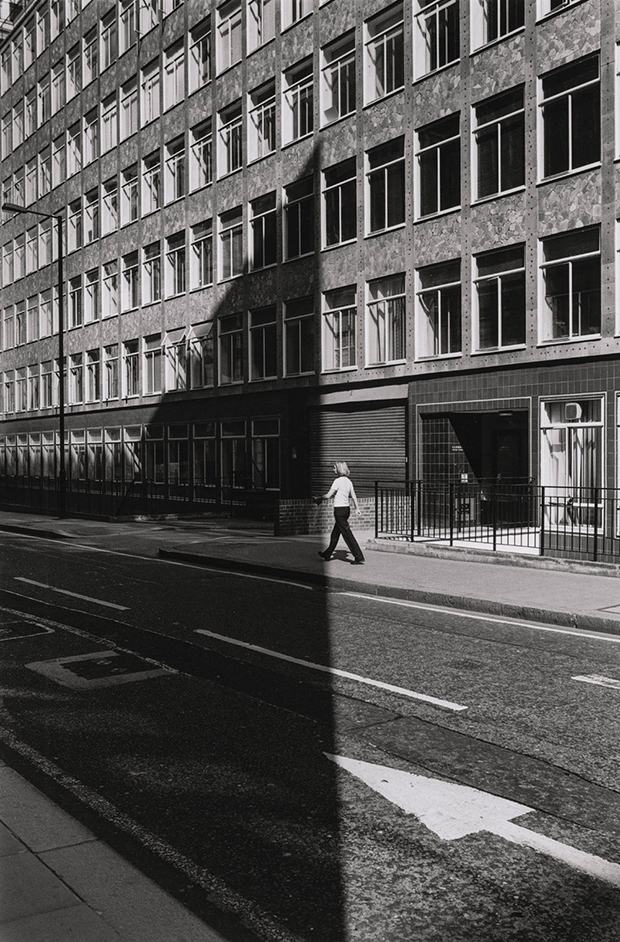
Five men in black suits and crisp white shirts stride with purpose along a pavement, casting shadows between the monumental columns of the Bank of England. A photographer lurks in full view – beyond the frame, of course – and freezes the image in time. A newspaper twisted on the floor is the only trace of discord in this clean, colourless shot.
Nicholas Sack has been photographing London’s financial district for 30 years, and his new book, Lost in the City, published by Hoxton Mini Press, is a striking collection pulled together from the last decade.
The project shows office workers moving uniformly through the streets, or taking a brief break, while the City’s architecture looms oppressively behind and above. The figures are like characters in science fiction – a matrix of the capital.
Sack captures a vision of London somewhat unfamiliar to those who have never worked in the City; there’s an ethereal quiet, both cold and clinical, with little of the warmth of, say, the photography of Bob Collins.
Instead, Sack’s work is an arena of alienation and testosterone, charged almost like advertisements for corporate fashion. Faces are generally turned away, expressionless or otherwise lost, and interaction seems relatively rare, but for those clicking into the digital world.
Previously a rock drummer, Sack finds musicality – a rhythm and beat – in the corridors and caverns of the territory. Typically shooting at lunchtime, when the sun is high, he sees patterns and symmetries in the buildings and their shadows, which mimic the repetitive routines of nine-to-five commerce. Although the voyeuristic images hint at a degree of impulsiveness, many will have demanded extraordinary patience.
In one shot, of a woman walking beneath an office block fronted by rows upon rows of large windows, a shard of darkness slices through the centre of the building; it’s a perfect composition, meticulous in its geometric alignments and typical of the wider body of work. I imagine Sack waiting all day for it.
Others images catch the city’s relentless urge to plan and build on top of itself, with scaffolding climbing into the sky and posters displaying a computer-generated future.

In his introduction to the volume, Iain Sinclair draws a comparison with Robert Frank’s 1951 City of London exposures; this is a spot-on reference that pays dues to the haunting, unreal quality of the prints. Other influences include Garry Winogrand, Lee Friedlander and Henry Wessel.
As much as Lost in the City is a document of a strange place and its people, it is also one of the photographer’s own journeys through, and complicated relationship with, his chosen zone. The title illuminates this duality, pointing to both the photographer’s urgent need to shoot and his subjects’ ultimately aimless wandering.
Lost in the City is published by Hoxton Mini Press. RRP: £12.95 ISBN: 9781910566039
